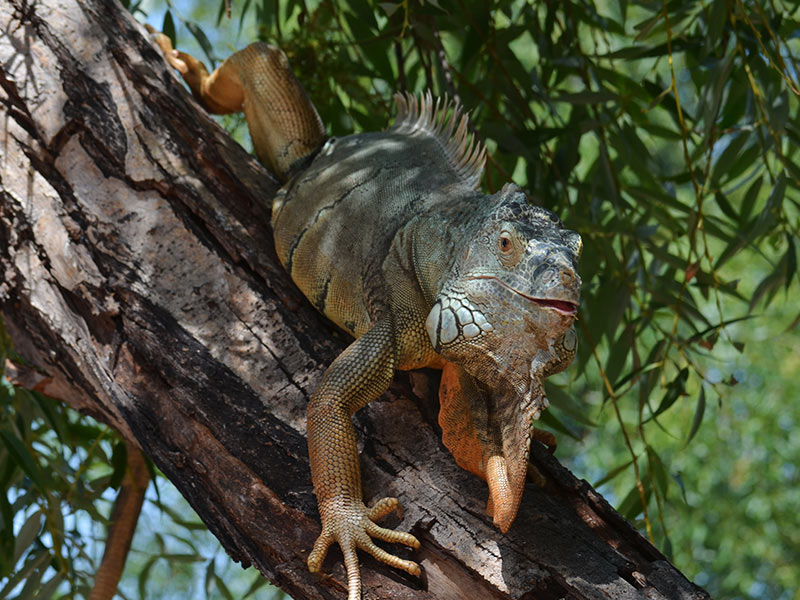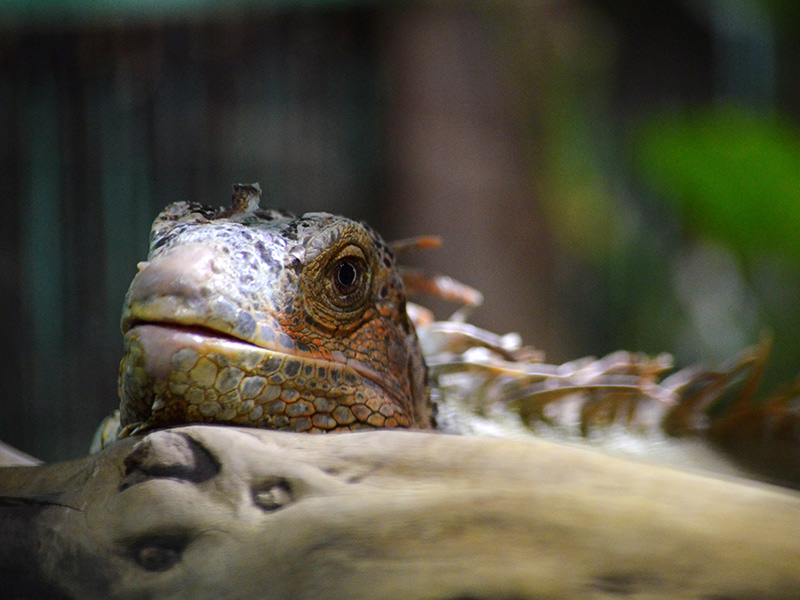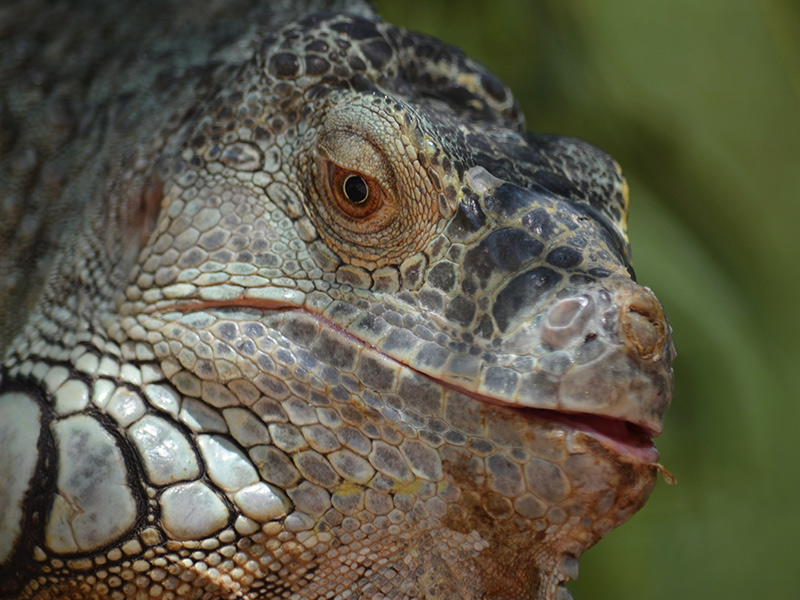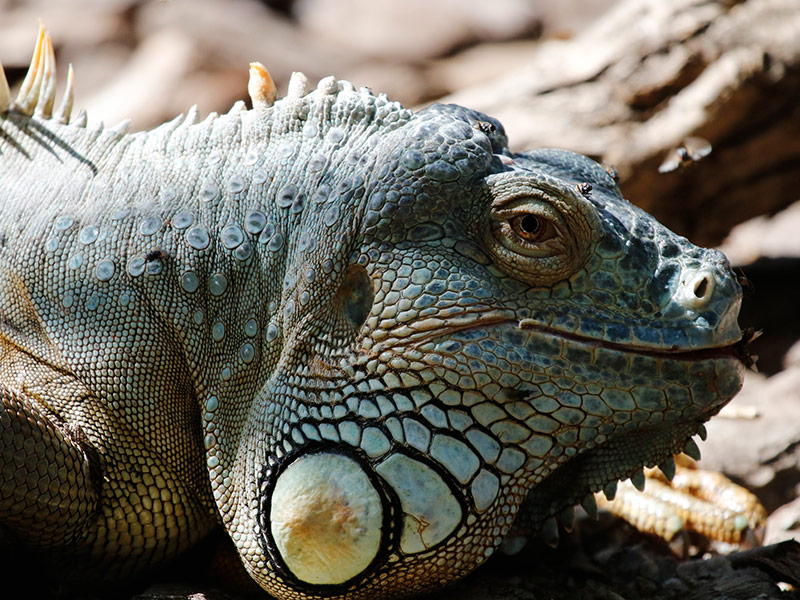They are found throughout Central and South America.
Although they are called Green iguanas, they actually vary in colour. An individual's colour may change according to its mood, temperature, health or social status. For example, when their body temperature is low in the mornings, their skin colour is darker, which helps them absorb heat, then, as the sun gets higher, they become lighter, which helps them reflect the sun's rays and minimise heat absorption.
It is an arboreal species that lives high up in the tree canopy. Their ability to live in trees allows them to bask in the sun and they rarely go down to the ground, except when the females dig burrows to lay their eggs.
Sixty-five days after mating, the female will lay an average of 10 to 30 eggs in a nest between 45 cm and 1 m deep. Incubation lasts 90 to 120 days.
In addition to helping disperse seeds and providing a food source for larger predatory animals, iguanas can be indicators of environmental change
Their main threat comes from poaching and the pet trade.





















